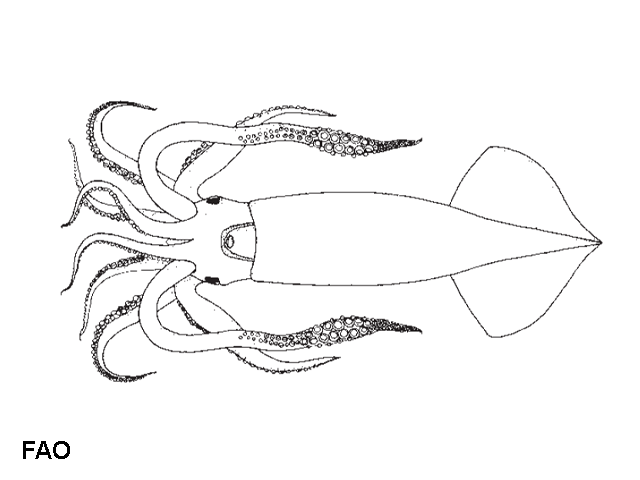| Ommastrephidae (flying squids and arrow squids), subfamily: Todarodinae |
| 35 cm ML (male/unsexed); 40 cm ML (female); max.weight: 800.0 g |
|
pelagic-oceanic; marine; depth range 0 - 700 m |
| Indo-West Pacific: Australia and New Zealand. Subtropical to temperate. |
|
|
| Females grow larger than males (Ref. 3722). Maximum depth from Ref. 8121. Minimum common depth from Ref. 121690. Neritic and oceanic species (Ref. 121690). Mostly inhabits waters <500 m in depth on the continental shelf and slope (Ref. 121690). Common in the continental shelf and sometimes can even enter shallow waters and estuaries, particularly during summer (Ref. 121673). Most abundant near the shelf-break front or where other mesoscale oceanographic activity is present. Mature squid may be restricted to deeper offshore waters for successful spawning (Ref. 121689). Feeds on ommastrephid squids, fishes (primarily pilchards; Ref. 275). |
|
(LC); Date assessed: 05 May 2010 Ref. 123251)
|
|
|
Source and more info: www.sealifebase.org. For personal, classroom, and other internal use only. Not for publication.

